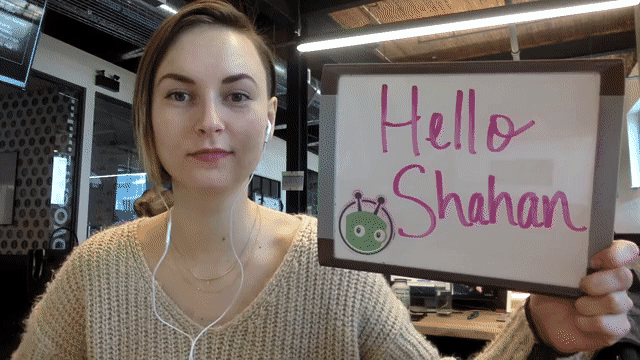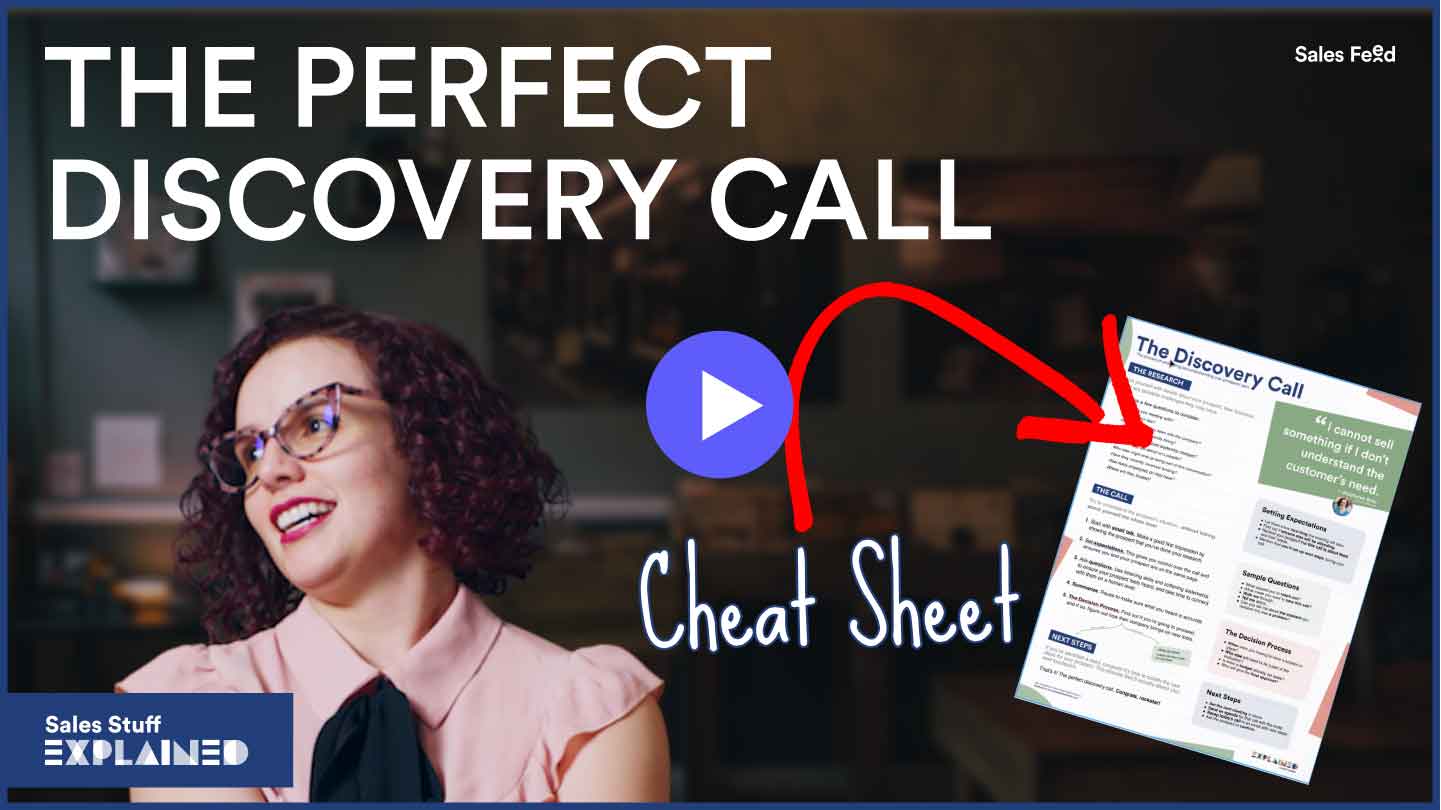Your first sales discovery call can be intimidating. We’ve put together an easy step-by-step guide on how to run the perfect sales call to help you connect with prospects.
The discovery call is one of the most crucial parts of selling. As the seller, it’s your opportunity to get to know your prospect and introduce them to what your business is all about.
In some ways, it’s kind of like a first date. And if you had the opportunity to get some background information on the person before you met on your date, wouldn’t you jump at the chance? Without discovery, you could be inviting your date to dinner at an all-meat Texas BBQ restaurant when they’re a vegetarian!
So you may be wondering, okay—How do I get started? What should I say? How do I even run a discovery call?
Lucky for you, this guide breaks down everything you need to know about a discovery call. We’ll give you three easy steps on how to run the perfect sales discovery call. Ready to get started?
- Contents
- 1. What’s a Discovery Call?
- 1.1 Sales Stuff Explained: Discovery Calls
- 2. Uncovering the Prospect’s Needs
- 3. 3 Steps for the Perfect Discovery Call
- 3.1 Step 1: Research
- 3.1.1 Sample Research Questions
- 3.2 Step 2: The Call
- 3.2.1 Start with Small Talk
- 3.2.2 Set Expectations
- 3.2.3 Ask Questions
- 3.2.4 Summarize
- 3.2.5 The Decision Process
- 3.3 Step 3: Next Steps
- 4. The Discovery Call Finish Line
What’s a Discovery Call?
A sales discovery call is typically conducted live via phone or video. In the call, the goal is to uncover and gain an understanding of your prospect’s problems. You do this by asking detailed questions so that both of you can achieve a mutual understanding.
The whole point of a discovery call is to figure out if there’s a problem or pain point that you can identify, dissect, and uncover. You can’t sell something to a prospect if you don’t understand their problem.
Sales Stuff Explained: Discovery Calls
Rather watch than read? The Sales Feed team asked top sales experts how to make the most of a sales discovery call on this episode of Sales Stuff Explained.
Uncovering the Prospect’s Needs
The reason to hold a sales discovery call is to listen to your prospect and dig into what it is they do and what they want to do better. At the end of the day, if you don’t take the time to identify your prospect’s needs, your “perfect” solution for their problem will be useless.
(Imagine if you were shopping for a pair of stylish shoes to wear to an event, and the salesperson suggests a show-stopping sandal…but the event is happening in the middle of the winter. The solution just isn’t a good fit for your specific needs.)
The best sales professionals use the discovery phase to ask questions to understand the prospect’s situation without emphasizing their own company or the product they sell.
Below, we’ll give you the play-by-play to help make the most out of your sales discovery calls.
3 Steps for the Perfect Discovery Call
The first step of the perfect sales discovery process is arguably the most important: The research.
Step 1: Research
Before jumping on the call, arm yourself with details about your prospect(s), their business, and any possible challenges they may have.
Sample Research Questions
- Who are you meeting with?
- Where are they located?
- How long have they been at the company?
- What is their title?
- Is this prospect currently hiring?
- Have there been recent leadership changes?
- What do they talk about on LinkedIn?
- Who else might end up being part of this conversation?
- How many employees do they have?
- Have they received funding?
Whether you consider all or part of the sample questions above, going into the call well prepared with some form of research done on your prospect makes them feel appreciated. Plus, you get to skip the boring, obvious questions and jump right into the targeted, more meaningful ones.
Step 2: The Call
Okay, so you’ve done the research and made contact with your prospect. Now it’s time to book a discovery call. The best way to segue into this is by starting with some small talk.
Start with Small Talk
Small talk is your chance to use your research and put it to good use. But don’t just blurt out everything you know about the prospect in two minutes—that would be overwhelming. Pace yourself and do it in a way that makes an excellent first impression, while still showing your prospect that you’ve done your homework.
You never know if someone’s going to be a small talk person. If you’ve got one of those people, make sure you ask them questions that relate more to them personally. Maybe it’s going on their Instagram and asking about that steak dinner they had last night— where they went, how it was etc.
Nick CegelskiTime by PingSenior Account Executive
Here are examples of small talk topics you can kick off with, and bonus points if you connect it with something you saw on their LinkedIn profile:
- The weather
- Plans in the upcoming days/weeks
- Vacation or travel plans
- Their hobbies and interests
- Entertainment (movies, shows, etc.)
- Current location
Set Expectations
Now that you’ve gotten the small talk out of the way, take the time to set up expectations.
Expectations could include the following:
- How long the meeting will take
- Key agenda items
- Who else will be attending the meeting
All of these expectations should be outlined in your original email to set up the discovery call, but it’s a good idea to briefly reinforce them once on the call.
Again, don’t start throwing your questions at them, otherwise you may risk turning off the prospect entirely. Instead, remind your prospect that this call is about them and their needs. You want to understand their current process and where they want to be.
When you set up expectations, this is called an upfront contract. This contract ensures that you and your prospect are on the same wavelength.
Ask Questions
Now for the questions!
Getting the answers to what’s driving the prospect, what they want to achieve or what are the big challenges they have takes time. You only earn the right to access this information by building a sense of connection and trust with the prospect.
Andy PaulSales Enablement PodcastHost
Each sales rep’s questions may vary, but they all come from a common place: Striving to build an understanding of your prospect’s current situation. Here are some guidelines when it comes to asking questions.
Start Strong
A great way to open is with questions like: “What caused you to reach out?” Otherwise, if the call is outbound, try: “What made you take this call?”
From there, you’ll work to get a clear understanding of how things work in their day-to-day.
Command Questions
Now is the perfect time to ask command questions like “Walk me through…” or “Tell me about…” Command questions are great tools to get your prospect talking.
Identify Three to Four Problems
The next part is to learn about three or four problems your prospect is facing with their current solution. Make sure to also ask them about the impact those problems are having on their business.
These questions don’t have to be super sophisticated. In fact, basic questions like “What would you like to accomplish today?” or “Could you tell me a little bit more about that?” can sometimes get the best answers.
At the end of the day, this is a listening exercise, so don’t make your prospects feel like they’re being cross-examined. Ensure your prospect feels heard and use softening statements to break up your questions.
Softening statements can include:
- I’m curious…
- Could you tell me…
- This might seem like a weird question…
- Do you mind if I ask…
- For some more context…
- You said that…
- I don’t know how to ask this…
- Based on what you’ve said so far…
Use this opportunity to connect on a human level with the prospect. Be interested and ask good questions.
Summarize
Now that you have a better understanding of your customer’s problem, try summarizing what you’ve heard in your own words from start to finish.
Even if it means having a pit stop midway through the conversation, reiterating what you’ve heard from the prospect so far will ensure you’re going in the right direction, and that everything is accurate. Summarizing can help clarify misunderstandings between you and the prospect and crystallize the business goals they have.
The Decision Process
Wow, we’re almost through step two of the sales discovery call! Now’s when you’ll gauge if your prospect wants to proceed and find out how their company brings on new tools.
Example of questions you could ask the prospect:
- When were you hoping to have a solution in place?
- Who else will need to be part of the evaluation?
- Is there a budget already set aside?
- Who’ll give the final approval?
- Is there anyone else who might find this conversation valuable?
- Is there anyone that might feel left out if we don’t include them?
It can be normal to realize that maybe things won’t work out between you and the prospect. Studies show that at least 50% of your prospects are not a good fit for what you sell. If things don’t work out now, politely say your goodbyes and leave that door open for the future.
However, let’s assume that all your amazing, well-researched, and thoughtful questions have led you to believe that you really do have a great solution for this prospect and their need. In this case, it’s time to talk about the next steps.
Step 3: Next Steps
You made it! All your efforts during the discovery call have paid off, and now it’s time for step three of the sales discovery call process: The next steps.
Your next call will likely be a more in-depth demonstration of your product or service. At this point, you may want to set an agenda for that call now. This way, the prospect can see the value in actually showing up. One effective method for the next steps is to send your prospect a follow-up video.
This example of a follow-up video sets the prospect up with next steps, as well as lets them know which Account Executive they can reach out to…all in less than 30 seconds. Visit our Video Inspiration Hub if you’re looking for more follow-up video examples.


 Learn the fundamentals behind effective video selling in our free 20-minute Video Selling Master Class. Take the Class
Learn the fundamentals behind effective video selling in our free 20-minute Video Selling Master Class. Take the Class In just a few minutes, you can let your prospect know the following:
- To expect an invite from you
- A review of key points discussed on the call
- An outline of any next steps
- Confirmation that all the information is accurate
The Discovery Call Finish Line
And voila! You just mastered the perfect sales discovery call.
In summary, you should have:
- Identified pain points
- Confirmed your product
- Determined next steps
- Set up the next meeting
- Set the meeting in stone
If you follow these steps, you’ll be on your way to a successful discovery call in no time. And if you’re ready to learn more, this episode of Sales Feed’s Full Funnel offers 10 tips to help you run the perfect sales discovery call.




![25 Inspiring Video Marketing Quotes [SlideShare]](wp-content/uploads/2022/11/25-Inspiring-Video-Marketing-Quotes-SlideShare-150x150.jpg)




![25 Inspiring Video Marketing Quotes [SlideShare]](wp-content/uploads/2022/11/25-Inspiring-Video-Marketing-Quotes-SlideShare.jpg)
More Stories
25 Inspiring Video Marketing Quotes [SlideShare]
2022 Video in Business Benchmark Report Shows Continued Triple-Digit Growth in Video Use
How to Add Video Chapters to YouTube and Vidyard